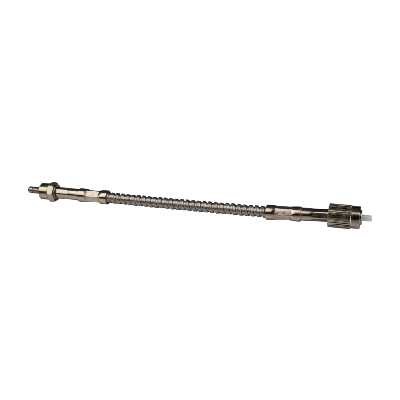AtomicClock
Optical fiber for atomic clock
SEDI-ATI optical fiber assemblies are mounted on the space atomic clock PHARAO on board the ISS to test Albert Einstein’s predictions on general relativity.
Majorconstraints
The solution must have relatively low out-gassing properties, be lightweight, and be as small and compact as possible.
It must also demonstrate high stability under:
- Thermal variations from -55°C to +85°C,
- Mechanical stress about 20 g RMS,
- Cosmic radiations (high-energy charged particles and atomic nuclei that move through space: protons, helium nuclei, antiprotons, electrons, positrons, and neutral particles like gamma rays, neutrinos, and neutrons).
Thechallenge
Measure the time with a 10-16 resolution in order to test even more precisely Albert Einstein’s famous theory of general relativity, from space!
ESA’s Atomic Clock Ensemble in Space (ACES)
The PHARAO (Projet d’Horloge Atomique par Refroidissement d’Atomes en Orbite) caesium atomic clock, combined with a hydrogen atomic clock, the Space Hydrogen Maser (SHM), form the ESA’s Atomic Clock Ensemble in Space (ACES). The ESA program ACES/PHARAO is the result of a collaboration between several European organizations and laboratories.
A guaranteed precision in the absence of gravity in space!
To achieve its accurate timekeeping, the PHARAO atomic clock has been attached to the outside of the European Columbus laboratory on board the International Space Station (ISS) in 2016. Indeed, in space, operating in micro-gravity provides a much more stable and accurate time base than in the presence of gravity like on Earth.
PHARAO is not the only atomic clock in space. Actually, it is accompanied by SHM (the Space Hydrogen Maser), which uses hydrogen atoms as a frequency reference and offers better stability but for a shorter time. By coupling the two clocks, ACES provides the scientists with a unique, highly stable time reference in space.
PHARAO, a clock with fiber optics technology
The cold caesium atom clock PHARAO was developed by France CNES space agency and the laboratory SYRTE.
The main purpose of this atomic clock is to reach a time resolution of about 10 ps, with a relative frequency resolution of 10-16, which corresponds to a time error of about one second over 300 million years!
To manipulate caesium atoms, the caesium tube must be linked to the laser source by means of optical fibers. In addition, time and frequency transfer is also done using optical fibers.
Why are scientists interested in atomic clocks?
The interest for researchers is that they are now able to compare many different atomic clocks based on atoms other than caesium, under different gravity levels since they now have access to the data from PHARAO and SHM at 400 km high, and from high-performance ground clocks developed by laboratories in various countries worldwide.
Comparing clocks will allow scientists to test Albert Einstein’s theories on space and time, but also other theories in fundamental physics, with a precision that is impossible in laboratories on Earth.
Our implication in this project
It is in this context, and under the aegis of EADS Sodern, that SEDI-ATI has been involved in the PHARAO project. The company was chosen for its expertise in the choice of optical fibers and materials with the properties required for the space environment, as well as for its know-how in the assembly of fiber components: collimators, cables, polarization-maintaining fibers, and NASA-type FC connectors with very low outgassing materials.
What are the fields of application concerned by this work?
Various areas of applications are concerned: International Atomic Time (TAI), Coordinated Universal Time (UTC), geodesy, Very Long Baseline Interferometry (VLBI), Atmospheric propagation of microwave signals, and support applications involving remote sensing via the GNSS network, etc.
SEDI-ATIsolution
Assembly of collimators, specific cables for space applications, special optical fibers and NASA FC-type connectors with selected ferrules.
Advantagesof the SEDI-ATI solution
- Robust assemblies,
- Very low outgassing materials,
- Lightweight, small and compact assemblies,
- Thermally and mechanically stable solutions.
Related products
-
Avionic fiber optic cables
SEDI-ATI has designed rugged avionic fiber-optic cables that meet the aeronautic constraints. Indeed, in aircraft, there are space and weight restrictions.
-
Radiation-resistant fiber optic cables
Optical fibers gather numerous advantages encouraging to integrate them in applications with radiative environments, associated with the civil, space or defense fields.




